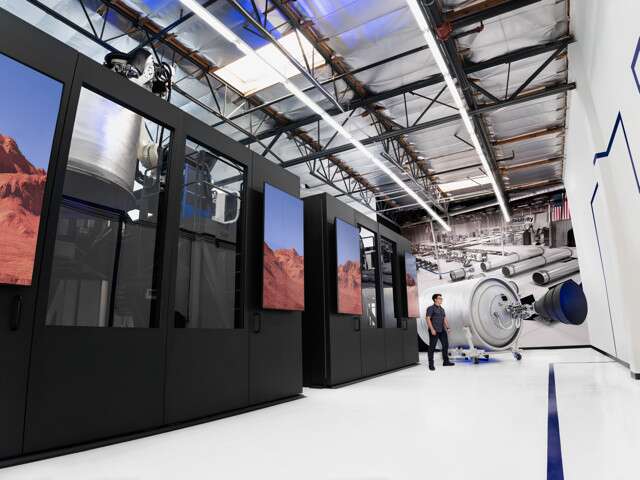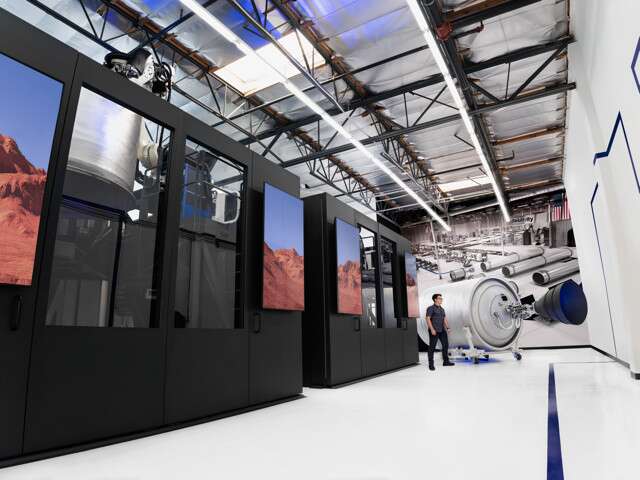Could a 3D-Printed Rocket Bring You Back from Mars?
Article By : George Leopold

Relativity wants to send its manufacturing ecosystem to the Martian surface, so astronauts can gather raw materials on Mars and build there what they need to return.
Among the most audacious aspirational goals put forth by a new generation of commercial space companies is sending to another planet the means to return to Mother Earth.
If manufacturing rockets using 3D metal printers wasn’t enough, high-flying rocket startup Relativity Space says ferrying a 3D printer to the surface of Mars is central to its very long-range strategy.
Co-Founder and CTO Jordan Noone, a veteran SpaceX propulsion engineer, notes that Relativity’s vision synchs with Elon Musk’s goal of sending humans to Mars. SpaceX with its prototype Starship spacecraft “delivers the humans, Relativity delivers the printers to make rockets.” The concept involves using iron and other weldable Martian materials to return home, Noone explains.
Far-fetched? Perhaps. But such a scenario would help address the many weight and consumable challenges that for now make a human mission to Mars a one-way trip.
Meanwhile, back on Earth, the LA-based startup with an increasing footprint at former NASA facilities announced the second-generation of its Stargate 3D metal printer and production line. The upgraded printers that replace the original version rolled out in 2016 are being installed across Relativity’s more than 280,000-square-foot rocket factory at NASA’s Stennis Space Center.

Noone said the upgraded version combines robotics, machine learning and metal 3D printing technology that is being used to fabricate everything from huge propellant tanks to individual engine components. Most of Relativity’s intellectual property resides in the printer head.
(The approach is reminiscent of Apollo engineers in the 1960s who tore apart and redesigned welding equipment to manufacture huge sections of the mighty Saturn V. Weight constraints dictated welding large booster sections. Bolts and fasteners were out of the question.)
The integration of machine learning with the metal 3D printing technology provides what Noone calls “closed-loop control” of the printing process that is constantly being scaled. The added capabilities mean the latest printers are autonomously learning how to print rocket components, he said.
The startup is on-schedule to launch the world’s first 3D-printed rocket from Cape Canaveral in early 2021. The Terran 1 launcher has a payload capacity of 1,250 kg (about 2,755 pounds). Not bad for a space startup, veteran rocketeers acknowledge. The launcher has recently been upgraded with a 3-meter payload faring, doubling the amount of volume it can house.
Relativity also this week announced a $140 million funding round that represents a kind of first in the history of technology startups: The startup’s fourth funding series — it has so far raised $185 million in venture capital — is the “first round that will have a flight with it,” Noone noted.
Breaking the mold
Another more down-to-Earth goal for the rocket startup is transforming the way launchers are built, an often slow, frustrating and costly process. (For example, the Air Force this week awarded a $1.18 billion contract to United Launch Alliance for five spy satellite to be launched aboard ULA’s Delta IV Heavy.)
By contrast, Relativity emphasizes flexible tooling and avoiding the need to re-manufacture failed rocket components. “You have a production line and rocket design that is scalable in production,” Noone explained in an interview. “Scaling production has always been the weak link.”
That agile approach has attracted frustrated rocketeers from traditional aerospace companies who Noone said were discouraged by a lack of innovation in rocket-production scaling. Among the problems Relativity seeks to address are the unique workflows required for nearly every rocket component.
While comments by venture capital firms sinking millions into technology startups tend toward gee-whiz adjectives like “thrilled” and “excited,” a statement by Relativity investor Arjun Sethi of Tribe Capital seems appropriate to an electronic engineering audience. Said Sethi: “Accelerating speed and in design manufacture and delivery of rockets will become the Moore’s Law of space travel and exploration.”
Those investors may be on to something. For example, the Air Force is working with its suppliers to allow 3D printing of older aircraft parts rather than purchasing new ones. Original parts are likely to cost much more since most are no longer in production. The Washington Post reported the service has so far printed more than 1,000 aircraft parts.
Elsewhere, the Navy has used 3D printers to manufacture low-cost parts that can be used to train its maintenance crews.
Investors are now betting two sharp, twenty-something engineers — Noone and CEO Tim Ellis — with roots at SpaceX and Blue Origin, respectively, can make good on the goal of lofting an entire technology ecosystem beyond Earth orbit — perhaps even one day, to the surface of Mars.
In so doing, humans would at last be able to make round-trips between Earth and the Red Planet.